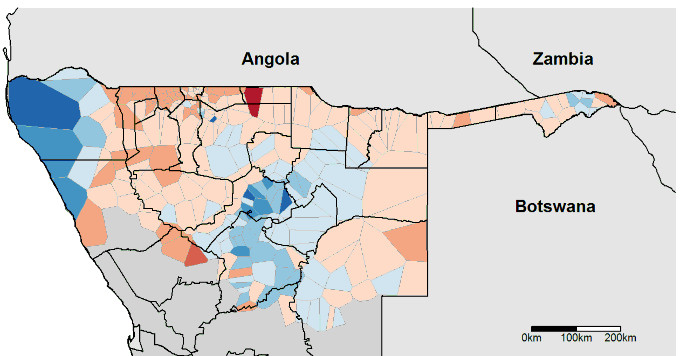WorldPop Projects
Identifying malaria transmission foci for elimination using human mobility data
Project leads: Andy Tatem, Nick Ruktanonchai
Collaborators/funders: Namibia National Vector Borne Disease Control Program, MTC Namibia, Bill and Melinda Gates Foundation, Clinton Health Access Initiative
Humans move frequently, potentially carrying malaria parasites with them. This mobility causes malaria parasites to move between areas with malaria and into areas where local transmission is unsustainable. Across landscapes, then, this mobility causes some areas to be sources of parasites and others to be sinks. Identifying these sources is critical for malaria elimination programs, as ending transmission in these areas will cause lower malaria burden in other areas, as well. Sinks, on the other hand, are lower priorities for elimination efforts as transmission will naturally cease in these areas once parasites no longer flow from sources.
Data describing human mobility and malaria epidemiology can help classify landscapes into sources and sinks, ecological concepts that have parallels in malaria control discussions of transmission foci. By linking transmission to parasite flow, it is possible to stratify landscapes for malaria control and elimination. We identify malaria sources and sinks for pre-elimination Namibia using malaria parasite rate maps and call data records from mobile phones, using a steady-state analysis of a malaria transmission model to infer where infections most likely occurred. This research, then, yields highly policy-relevant maps of parasite sources and sinks that can be directly used to target malaria elimination efforts.



